
May 28, 2023
Dr. David Fialk, Editor / Publisher
This week my neighbor's house alarm has been going off randomly. Its siren sounds, very loudly, an appalling, stress-inducing waffling wail directly down my little dead end, penetrating, bricks and mortar and soul.
It goes on for what seems an eternity, but is probably just a very long ten minutes. It's happened three times over the course of the last week, but I'm not always here, so there might have been more.
It only happened during the day, until this morning. Since 5am it has sounded five times in a row, for a total of 50 minutes. The two-to-three minute breaks between the alarms are a mixed blessing. On one hand, the silence coming in like a sudden tide is wonderful. The respite, brief as it is, allows me to catch my sonic breath. On the other hand, the hope that the ordeal might be over, and the disappointment when it starts up again are crushing.
I've closed all my windows. I've put in my earplugs. I've hidden away in a back room behind a closed door. But the noise is horrible, designed to disturb; much louder than any car alarm; much more irritating than a police car's siren. Think of it as mental tasing.
Believing that the sound was emanating from a different house I called the cops, thinking that they would have a way of contacting that property's owner. When I went out and spoke with them, they told me that, besides ringing the doorbell and speaking with the property owner, there's nothing that they can do.
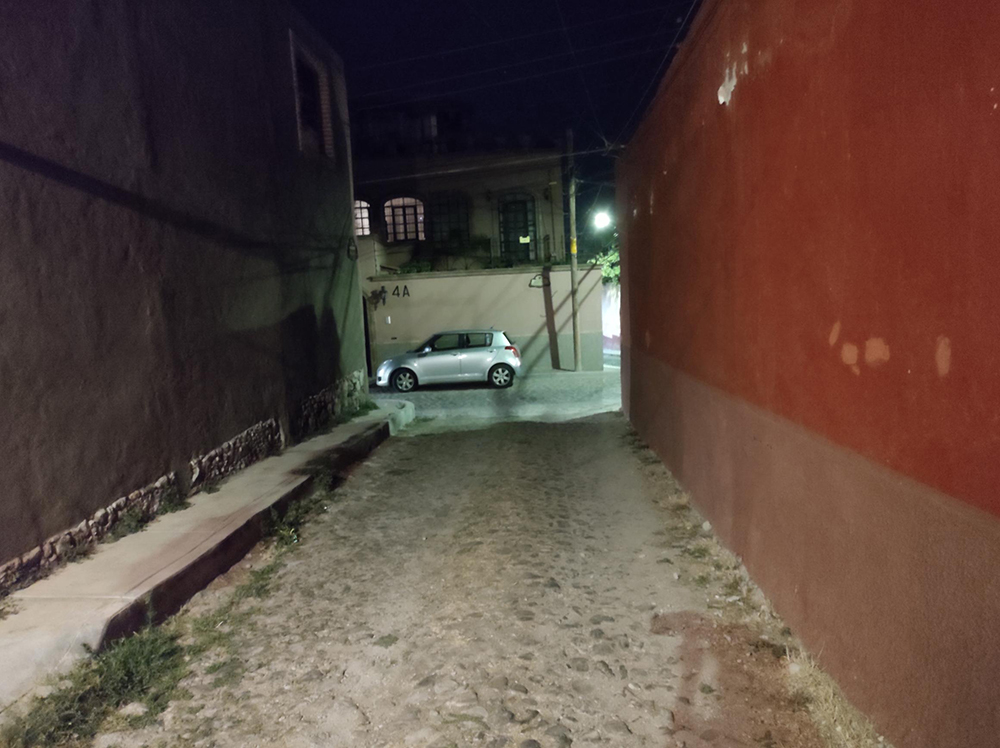
But that trip, out into the blaring darkness at 5:30, informed me which house was in fact being hyper-sensitive. Of course, if that property owner were on site, she would have turned off the alarm and had the problem fixed earlier in the week. A nice neighbor, an extranjera (the polite term for gringa), she and her cute little dog are obviously both out of town.
Out there on the cold cobbles, wondering when or if it would stop, driven to desperation, I almost rang the bell of the couple who live next door, who I assume know how to contact our absent neighbor. The couple is also friendly, also from north of the border. But right before ringing their doorbell, I thought, just maybe, they are sleeping through this horror.
Now, at five to 6:00, with the alarm having stopped sounding for a full 10 minutes, I'm hopeful, but not ready to put away the earplugs. Sitting here before my computer, my nervous system violated, suffering post-traumatic stress, I'm in a good space to do some "homework" given me eight days ago by Samadhi, the woman who runs the Family Constellation session I attended.
It was my turn to have acted out some difficulty in what I've assumed was my personal psychology. Samadhi, sometime into this vaguely theatrical role playing, asked me if any of my ancestors had been murdered. Well, being Jewish I replied that there has been quite a lot of that sort of thing.
I've seen in my practice of medicine and counseling that much that we take as personal is really a familiar or racial inheritance. But I didn't apply that here, in my own case. After my session, therapeutic in itself, Samadhi told me to light a candle for 21 days and say "It was perfect."
Briefly, at the close of my article last week, beginning that homework, I addressed art and culture as a response to the horror of life. Now, still reeling from the alarm in this predawn darkness, I am in the right frame of mind to write some more.
Born in 1957, as a little Jewish boy, I was, quite early on, aware of the Holocaust. It was talked about at synagogue. It was on television. Years later, I came to appreciate that the Nazi machine as only the most modern, industrially-efficient recurrence of the fate that we Jews have suffered for a thousand years in Europe and Russia, where (leaving aside individuals murdered) whole Jewish populations of towns and cities were slaughtered in frequent pogroms for centuries before World War Two.
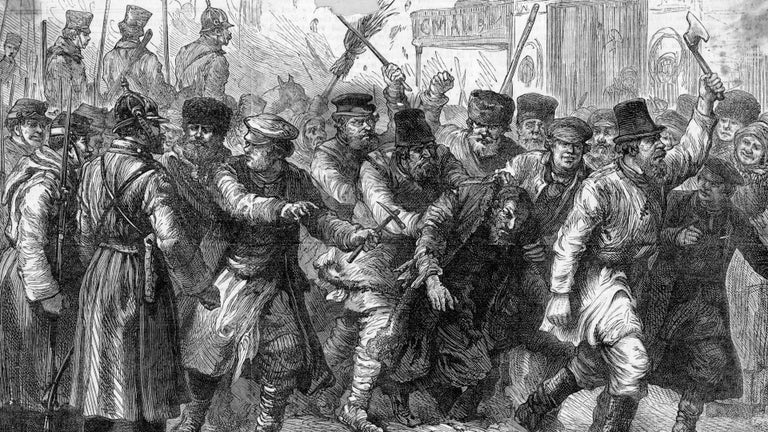
Later still, it dawned on me that our being terrorized (as we were by the Third Reich and an all too compliant local civilian population), starved in a ghetto, then packed tightly into cattle cars and transported to a deathcamp, where women had their heads shaven (their hair was valuable) and everyone was stripped, and packed tightly again, this time into a large room, to be "showered" with poison gas, was a much better way to die then going through the bone-cracking torture of the Spanish Inquisition only to be burnt alive at the stake, a process prolonged by the layers of wet wool wrapped around your torso. This auto de fe was a more or less common spectacle, once upon a time performed locally, here in the Bajío.
I'll stop. The alarm has stopped (now for 40 minutes), so I'll stop this too graphic history lesson. But before I do... There is a museum in Israel, Yad Vashem, where it doesn't stop, where, as much as anyone could remember on the subject, is all recorded.
Like the siren sounding again after two minutes of silence, I recount here the episode that struck me most from my visit to that museum (a museum situated in a semi-desert landscape, very similar to our own), an episode I read in a book of atrocities, text on one page and art on the one facing, a very large book.
The story involves a local priest, in some European town, who, deciding that it was necessary to try to save their souls, made a line of the Jewish children (I think just the boys). The line extended from the belfry of the church down the steeple stairs and some not insignificant distance out the bottom door.
At the top sat the priest asking the boy first in line, each first boy in line, in pitiless succession, if he accepted Jesus Christ as his Lord. Receiving a no for an answer, the boy was flung from that height. The process was repeated, with the same results, until the line was exhausted, until there were no boys left.
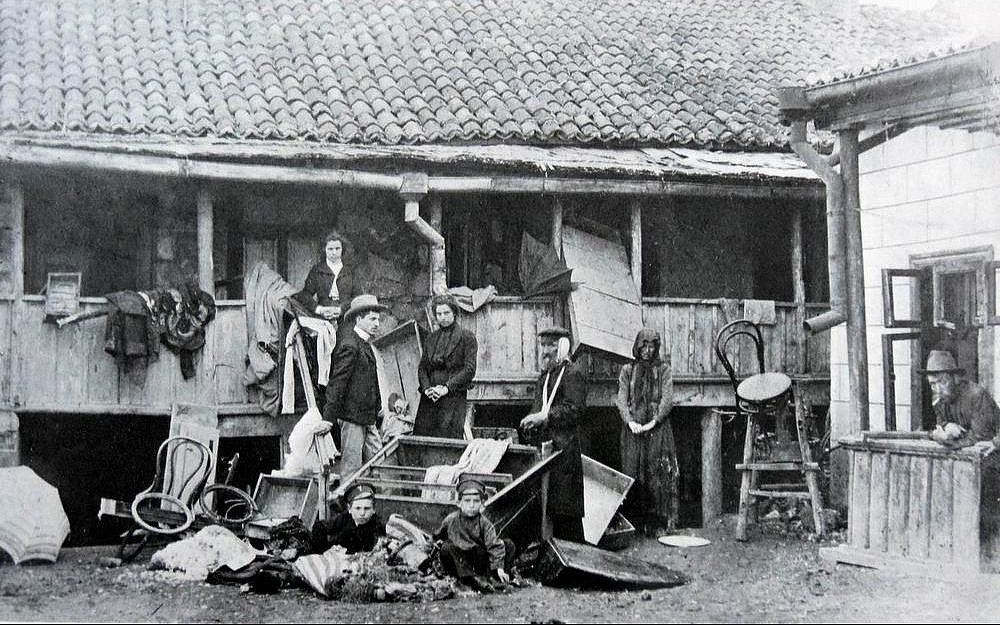
Imagine the bravery, the resolve, the bodies piling up below. Imagine the horror-stricken parents, held back by men at arms, looking on screaming. Imagine the unimaginable and you will begin to sense the quotidian horror, the ordinary suffering of my race, the trauma reverberating, the siren echoing even when the emergency is, temporarily, suspended.
Today, Jews are, by far, the most frequent victims of hate crimes in Canada and the US, but the siren is silent. Each week Iran is threatening to destroy Israel, vows to help finish what Hitler was forced to leave off, but the alarm is not going off. The nations, the goyim, are accustomed to killing us, or, at least, to us being killed. Even in cultured France there is not much response to our grisly murders, not today, not ever.
My first remembrance of the Holocaust was, as a boy, staring at the concentration camp numbers tattooed to the inner forearm of my Hebrew school teacher. When days were warm, Cantor Fishman would roll up his sleeves and sometimes, very briefly, fall asleep.
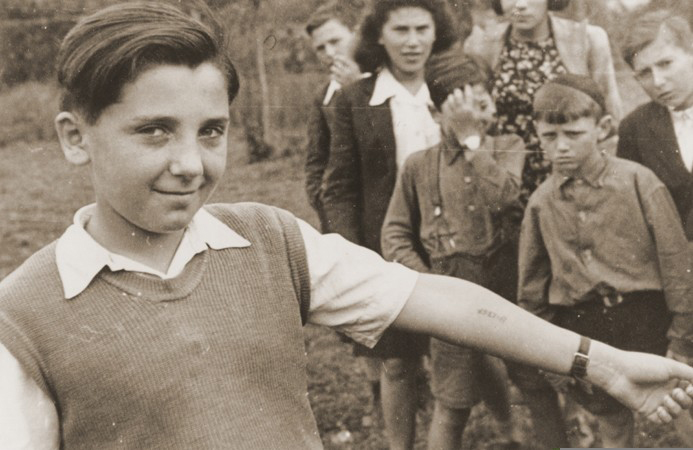
I know that there have been other genocides. I know that some have been more recent. I know that some are going on now. But I think that that of the Jews, ubiquitous and stretched out over a millennium, gives our genocide special distinction, makes us the poster child for victimhood.
But I won't argue the point. Maybe it's just special to me because it's my holocaust, the sirens still going off in my not-so-personal psychology. Anyway, horror, real abject horror, is not measurable. Any fraction of infinity is still infinity.
When it's over, when the outside alarm stops sounding, at least in part, you have to forget. Those who cannot, lose their minds. I have seen the survivors and their children. One old man came up to me in synagogue and said, "You don't look Jewish. That's very good."
Last night it rained. The day has dawned, slightly overcast again. The acoustical horror is over. Earplugs sit on the table before me. The windows are open again. Somewhere distantly, a dog is barking. Farther yet, as usual, truck brakes sound coming down the mountain.
The induced psychic alarm, that helped me do my homework, recedes. The dark terror fades in the growing light of day. On some horribly inhuman, cosmic scale, somehow, I try to believe that "It was perfect."
**************
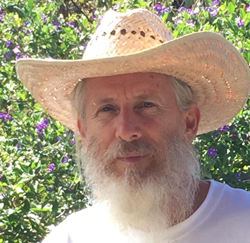
Dr. David presents Lokkal, the social network, the prettiest, most-efficient way to see San Miguel online. Our Wall shows it all. Join and add your point of view.
**************
*****
Please contribute to Lokkal,
SMA's online collective:
 ***
***
Discover Lokkal:
Watch the two-minute video below.
Then, just below that, scroll down SMA's Community Wall.
Mission

Visit SMA's Social Network
